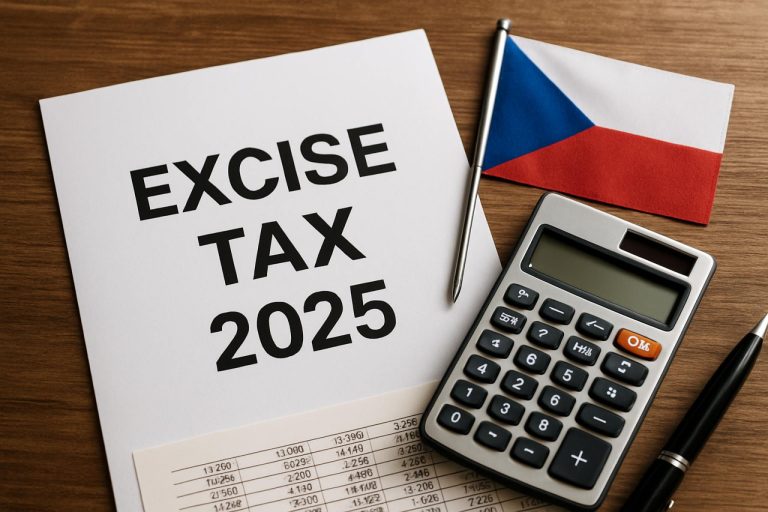
Table of Contents
- Executive Summary: Key Insights & Market Overview
- Historic Performance: Zambia’s Stock Market in Context
- 2025: The Current Landscape—Indices, Sectors, and Major Players
- Key Statistics: Trading Volumes, Market Capitalization, and Growth Rates
- Regulatory Environment: Laws, Taxation, and Compliance Essentials (lusakasecuritiesexchange.com, seczambia.org.zm, zra.org.zm)
- Macroeconomic Drivers Impacting the Zambian Stock Market
- Sector Spotlight: Banking, Mining, Agriculture, and Emerging Industries
- Digital Transformation and Technology Adoption in Zambian Capital Markets
- Risks, Challenges, and Opportunities: What Investors Need to Know
- Future Outlook: Projections for 2026–2029 and Strategic Recommendations
- Sources & References
Executive Summary: Key Insights & Market Overview
The Zambian stock market, anchored by the Lusaka Securities Exchange (LuSE), has demonstrated resilience and gradual growth amidst both domestic and global economic shifts. As of early 2025, LuSE lists over 25 companies, with a combined market capitalization surpassing ZMW 80 billion, reflecting increased investor confidence and participation. The exchange has observed a notable uptick in both equity and bond trading volumes since 2023, bolstered by monetary policy stability and ongoing reforms within the financial sector.
Key drivers for these trends include the Zambian government’s commitment to fiscal consolidation, as outlined in the 2024 National Budget, and the continued implementation of the Securities and Exchange Commission (SEC) of Zambia’s revised regulatory framework. The SEC Annual Report highlights improvements in market transparency, enhanced compliance requirements for listed firms, and the introduction of more robust anti-money laundering measures under the Securities Act No. 41 of 2016.
Sectoral performance remains mixed. Financial services, mining, and telecommunications continue to dominate market capitalization and trading activity. The listing of additional government debt instruments has also deepened capital market liquidity, attracting institutional investors such as pension funds and insurance companies. The increased engagement of retail investors, aided by digital trading platforms and ongoing financial literacy campaigns, has contributed to broader market participation.
Law and compliance frameworks have been strengthened through regular reviews by the SEC of Zambia, with a focus on corporate governance, timely disclosure, and investor protection. Efforts to align with international best practices are evident, with LuSE’s ongoing adoption of the International Financial Reporting Standards (IFRS) and enhanced listing requirements. These initiatives seek to bolster confidence among both domestic and foreign investors.
Looking ahead to the remainder of 2025 and beyond, the outlook for Zambia’s stock market is cautiously optimistic. Continued economic recovery, stabilization of the Zambian kwacha, and further integration with regional financial markets are expected to underpin sustained growth. However, the market remains sensitive to global commodity price fluctuations and local policy uncertainties. Strategic reforms, digitalization, and broader product offerings—such as Real Estate Investment Trusts (REITs) and green bonds—are anticipated to further diversify and strengthen the Zambian capital market ecosystem.
Historic Performance: Zambia’s Stock Market in Context
Zambia’s stock market, primarily represented by the Lusaka Securities Exchange (LuSE), has experienced notable fluctuations and gradual maturation since its inception in 1994. Over the past decade, the LuSE has seen incremental growth in both market capitalization and listed companies, albeit from a low base compared to more established African exchanges. As of the end of 2024, LuSE’s total market capitalization stood at approximately ZMW 90 billion, reflecting both organic growth and the impact of currency fluctuations on dual-listed entities. The number of listed companies has remained relatively stable, hovering around 25, with recent additions mainly from the financial services and agriculture sectors.
Regulatory development has played a critical role in shaping market trends. The Securities and Exchange Commission Zambia (SEC Zambia) continues to implement measures to enhance transparency, investor protection, and compliance. Recent amendments to the Securities Act have tightened disclosure requirements and introduced more robust enforcement mechanisms, aligning with international best practices and improving market confidence. The introduction of the automated trading system in 2023 marked a significant technological upgrade, enabling faster settlements and greater market access for both institutional and retail investors.
A key event impacting the stock market in recent years was the government’s progress in restructuring external debt and the gradual stabilization of macroeconomic fundamentals, particularly after Zambia’s historic 2020 sovereign default. Improved fiscal discipline and engagement with international creditors have helped restore investor confidence, as evidenced by a moderate uptick in trading volumes and a narrowing of bid-ask spreads on LuSE-listed equities. The 2024 Budget, with its focus on private sector-led growth and investment incentives, has further buoyed market sentiment, encouraging new listings and secondary offerings.
Despite these positive trends, liquidity remains a structural challenge. The average daily trading value on LuSE continues to lag behind regional peers, partly due to limited free float and concentration of holdings among institutional investors. To address this, SEC Zambia has intensified efforts to promote public awareness and financial inclusion, alongside initiatives to attract listings from small and medium-sized enterprises.
Looking ahead to 2025 and beyond, the outlook for Zambia’s stock market is cautiously optimistic. The anticipated listing of state-owned enterprises, ongoing regulatory reforms, and continued macroeconomic stabilization are expected to support market depth and resilience. However, sustained progress will depend on further improvements in corporate governance, investor education, and the broader economic environment. The Zambian capital market’s ability to attract both domestic and foreign investment will be pivotal in shaping its trajectory through the remainder of the decade (Lusaka Securities Exchange).
2025: The Current Landscape—Indices, Sectors, and Major Players
As of 2025, the Zambian stock market continues to be anchored by the Lusaka Securities Exchange (LuSE), the country’s primary equities and debt trading platform. The LuSE All Share Index (LASI) has experienced moderate growth over the past year, buoyed by renewed investor confidence in Zambia’s macroeconomic management and improvements in fiscal policy transparency. According to quarterly bulletins from the Lusaka Securities Exchange, the LASI closed Q1 2025 up by approximately 9% year-on-year, reflecting steady gains in select sectors such as banking, telecommunications, and mining.
Sectorally, financial services remain dominant, with major players like Absa Bank Zambia Plc, Zanaco Plc, and Stanbic Bank Zambia Ltd consistently commanding high trading volumes. The mining sector, historically a cornerstone of Zambia’s economy, is represented on the exchange by entities such as First Quantum Minerals Ltd and ZCCM Investments Holdings Plc. Additionally, the telecommunications sector has seen increased investor interest, especially following the listing of Airtel Networks Zambia Plc.
On the legislative and regulatory front, the Securities and Exchange Commission Zambia (SEC Zambia) has continued to enforce the Securities Act No. 41 of 2016, focusing on enhancing market transparency, anti-money laundering (AML) compliance, and investor protection. In 2024 and into 2025, SEC Zambia rolled out new guidelines to facilitate faster settlement cycles and strengthen disclosure obligations for listed companies, in line with regional best practices. These reforms are designed to boost market liquidity and align with the government’s broader financial sector development strategy, as outlined by the Ministry of Finance and National Planning.
Statistically, LuSE’s market capitalization exceeded ZMW 90 billion as of March 2025, with over 25 listed equities and a growing number of corporate bonds. Foreign portfolio participation remains modest but is gradually increasing, supported by stable exchange rates and Zambia’s improving sovereign risk profile. The outlook for 2025–2027 is cautiously optimistic: ongoing digitalization of trading systems and further regulatory reforms are expected to attract both domestic and international investors, while macroeconomic stabilization efforts continue to underpin confidence in Zambia’s capital markets.
Key Statistics: Trading Volumes, Market Capitalization, and Growth Rates
The Zambian stock market, overseen by the Lusaka Securities Exchange Plc (LuSE), has continued to play a pivotal role in the country’s capital formation and investment landscape. As of early 2025, LuSE lists over 25 companies, with sectors represented spanning banking, insurance, manufacturing, and agriculture.
- Market Capitalization: As of March 2025, LuSE’s total market capitalization stands at approximately ZMW 100 billion (about USD 4.3 billion at current exchange rates). This reflects a growth of over 18% from the previous year, driven by favorable commodity prices and renewed investor confidence following macroeconomic stabilization Lusaka Securities Exchange Plc.
- Trading Volumes: The average daily trading volume in the first quarter of 2025 reached 2.5 million shares, a significant increase from the 1.7 million shares daily average in Q1 2024. This uptick is attributed to the introduction of digital trading platforms and enhanced participation by institutional investors Lusaka Securities Exchange Plc.
- Growth Rates: The LuSE All Share Index recorded a year-on-year gain of 22% by March 2025, outperforming several regional peers. This performance is partially due to robust earnings in the banking and mining sectors, as well as increased listings of small and medium enterprises (SMEs) through the GEM Portal (Growth Enterprise Market) Lusaka Securities Exchange Plc.
Regulatory reforms led by the Securities and Exchange Commission Zambia (SEC Zambia) have also contributed to improved transparency and investor protection, enhancing market confidence. The SEC continues to enforce compliance with the Securities Act No. 41 of 2016, which mandates rigorous disclosure requirements and corporate governance standards for listed entities.
Looking ahead, the outlook for Zambia’s stock market remains cautiously optimistic. Domestically, ongoing economic reforms, inflation moderation, and a stable exchange rate are expected to sustain growth in both market capitalization and trading activity through 2026. Externally, global demand for copper and agricultural exports could further buoy listed companies’ performance. However, challenges such as regional volatility and periodic currency fluctuations may temper growth rates in the medium term.
Overall, key statistics in 2025 underscore the Zambian stock market’s resilience and growing depth, positioning LuSE as an increasingly attractive platform for both local and foreign investors.
Regulatory Environment: Laws, Taxation, and Compliance Essentials (lusakasecuritiesexchange.com, seczambia.org.zm, zra.org.zm)
The regulatory environment underpinning Zambia’s stock market has seen progressive refinement in response to evolving market dynamics and investor protection imperatives. The primary regulatory bodies are the Securities and Exchange Commission Zambia (SEC Zambia) and the Lusaka Securities Exchange (LuSE). Their mandates encompass licensing, market supervision, compliance enforcement, and fostering transparency in line with the Securities Act No. 41 of 2016 and its subsequent amendments.
Recent years have featured targeted regulatory reforms. In 2023, SEC Zambia intensified surveillance of listed companies’ disclosures, responding to regional calls for higher corporate governance standards. Enhanced requirements for periodic reporting, insider trading controls, and investor education initiatives have been rolled out to mitigate risks and boost confidence among both local and foreign investors. LuSE has equally upgraded its listing rules and compliance frameworks, introducing digital submission systems and more stringent continuous disclosure obligations. These changes have contributed to a marked improvement in regulatory compliance levels among issuers and intermediaries, as reflected in LuSE’s recent compliance audit reports.
Taxation remains a pivotal consideration for market participants. The Zambia Revenue Authority (ZRA) administers a range of fiscal measures impacting stock market activities. As of 2025, capital gains on listed securities remain exempt from taxation for both residents and non-residents, a policy designed to incentivize market participation and deepen capital markets. Dividend income, however, is subject to a 15% withholding tax for residents and 20% for non-residents, unless modified by double taxation treaties. These tax structures are periodically reviewed within the national budget process, and stakeholders anticipate continued government support for capital market incentives in the near term.
The Zambian stock market, while modest in regional scale, demonstrated resilience in 2024 with increased listings in the financial, agribusiness, and energy sectors. LuSE reported a market capitalization approaching ZMW 80 billion and trading volumes up 15% year-on-year, driven by regulatory clarity and improved investor confidence. Looking forward to 2025 and beyond, further regulatory alignment with international standards—especially on anti-money laundering, environmental, and social governance (ESG) disclosures—is expected. The ongoing digitalization of compliance processes and the introduction of new financial instruments (such as green bonds) will likely bolster transparency and attract a more diverse investor base.
In summary, Zambia’s stock market regulatory environment in 2025 is characterized by proactive legislative oversight, investor-friendly tax incentives, and a clear trajectory toward global best practices. These factors are projected to underpin sustained market growth and increased regional integration through to the late 2020s.
Macroeconomic Drivers Impacting the Zambian Stock Market
The Zambian stock market, primarily represented by the Lusaka Securities Exchange (LuSE), is closely intertwined with the country’s broader macroeconomic environment. Over 2024 and into 2025, several macroeconomic drivers—such as GDP growth, inflation, monetary policy, and regulatory reforms—are shaping both investor sentiment and the operational landscape of listed companies.
Zambia’s real GDP growth has shown signs of recovery following the global disruptions of previous years. The Bank of Zambia projects moderate GDP growth for 2024–2025, buoyed by increased copper production and a rebound in agriculture. However, persistent inflationary pressures, driven by currency volatility and food prices, have led the Bank of Zambia to maintain a tight monetary stance. As of early 2025, the policy rate remains elevated, directly affecting borrowing costs for corporates and investors alike.
On the legal and compliance front, the implementation of the Securities Act No. 41 of 2016 continues to underpin market integrity and investor protection. The Securities and Exchange Commission Zambia (SEC Zambia) has intensified oversight of market participants, with a focus on anti-money laundering (AML) compliance and enhanced disclosure requirements for issuers. In 2024, the SEC introduced new guidelines for public offerings and disclosure, aiming to boost transparency and attract both domestic and foreign investment.
Key market statistics underscore both challenges and opportunities. As of the first quarter of 2025, LuSE’s market capitalisation stands at approximately ZMW 80 billion, reflecting moderate year-on-year growth. Trading volumes, however, remain concentrated among a handful of large-cap stocks, with limited liquidity in the broader market. The number of listed companies remains below 30, highlighting untapped potential for new listings and capital formation (Lusaka Securities Exchange).
Looking ahead, the outlook for the Zambian stock market is cautiously optimistic. The government’s commitment to public sector reforms, debt restructuring, and investment-friendly policies could foster a more robust investment climate. The anticipated rollout of the Central Securities Depository’s new digital infrastructure in 2025 is expected to streamline settlement processes and enhance market efficiency (Bank of Zambia). Nonetheless, risks remain from external commodity price shocks, fiscal pressures, and potential delays in structural reforms.
- Macroeconomic stability and regulatory enhancements are expected to attract more institutional and retail investors.
- Sustained economic growth and improved compliance frameworks are likely to support gradual expansion in market capitalisation and listings.
- Ongoing digitalisation efforts may address liquidity concerns and improve overall market accessibility.
Sector Spotlight: Banking, Mining, Agriculture, and Emerging Industries
The Zambian stock market, primarily facilitated through the Lusaka Securities Exchange (LuSE), has shown marked resilience and gradual expansion in recent years, with significant implications for the banking, mining, agriculture, and emerging industries sectors. As of 2025, the LuSE lists over 25 companies, with market capitalization exceeding ZMW 85 billion—a substantial increase from previous years attributed to renewed investor confidence and sectoral reforms (Lusaka Securities Exchange).
Sector-wise, banking remains a dominant force on LuSE, driven by robust compliance with prudential guidelines and anti-money laundering regulations enforced by the Bank of Zambia. Recent market activity reflects strong performances by leading banks, underpinned by digital transformation initiatives and increased access to financial services. The 2024 amendment to the Banking and Financial Services Act has further strengthened compliance frameworks, improving transparency and investor protection (Zambian Legal Information Institute).
Mining, a cornerstone of Zambia’s economy, significantly influences market trends. Copper and cobalt producers, several of which are LuSE-listed, have benefited from favorable global commodity prices and policy measures aimed at boosting domestic value addition. The 2023 Mines and Minerals Development (Amendment) Act emphasized local participation and environmental compliance, making mining equities attractive to both domestic and foreign investors (Ministry of Mines and Minerals Development).
Agriculture, traditionally underrepresented, is emerging as a growth driver on the bourse. Incentives under the 2024 Agriculture Act—such as tax breaks for agri-business IPOs and enhanced regulatory oversight—have spurred new listings and increased trading volumes in agribusiness stocks. The sector’s stock market footprint is expected to expand further as Zambia pursues diversification strategies and climate-resilient agriculture (Ministry of Agriculture).
Emerging industries, including renewable energy, fintech, and telecommunications, are rapidly gaining traction. Regulatory reforms—such as the 2023 Securities (Listing Requirements) Guidelines—have lowered barriers for tech-oriented companies seeking public capital, resulting in the first listings from the fintech and clean energy sectors (Securities and Exchange Commission Zambia). These sectors are projected to drive future market growth, reflecting government priorities for innovation and economic diversification.
Looking ahead, the outlook for Zambia’s stock market is cautiously optimistic. Ongoing regulatory enhancements, fiscal reforms, and efforts to deepen market liquidity are expected to attract more listings and broaden investor participation across all spotlight sectors through 2025 and beyond. However, sustained growth will depend on macroeconomic stability and continued compliance with evolving legal frameworks.
Digital Transformation and Technology Adoption in Zambian Capital Markets
The Zambian capital markets have experienced significant digital transformation in recent years, shaping evolving stock market trends as the country enters 2025. The Lusaka Securities Exchange (LuSE), the principal securities exchange in Zambia, has prioritized modernization to enhance transparency, efficiency, and investor participation. In 2023, LuSE launched an enhanced Automated Trading System (ATS), enabling real-time electronic trading and settlement, which has contributed to increased liquidity and improved price discovery mechanisms. This transition from manual to digital trading is in line with the strategic objectives set by the Securities and Exchange Commission of Zambia (SEC Zambia) to foster market integrity and investor protection.
Key regulatory reforms have further supported digital adoption. The Securities Act, 2016 and subsequent amendments require all market participants to comply with robust Know-Your-Customer (KYC) and Anti-Money Laundering (AML) protocols, now increasingly digitized to streamline onboarding and compliance monitoring. In 2024, LuSE also introduced a digital Central Securities Depository (CSD), allowing investors to open and manage accounts electronically, thereby reducing barriers to entry and promoting broader retail participation.
Statistically, these innovations are yielding results. According to SEC Zambia, the number of retail investor accounts grew by over 30% between 2022 and 2024, while daily average trading volumes on LuSE increased by 22% in the same period. The market capitalization of listed equities surpassed ZMW 90 billion in early 2025, reflecting renewed investor confidence and a surge in listings, particularly from the financial technology (fintech), energy, and agriculture sectors. The introduction of digital trading platforms and mobile applications by brokers has played a central role in democratizing market access across urban and rural demographics.
Looking ahead, the outlook for Zambia’s stock market is positive. The government’s commitment to digital financial infrastructure, as outlined in the National Financial Sector Development Policy, is expected to further drive innovation and attract both domestic and foreign investment. Continued enhancements in cybersecurity, regulatory compliance, and fintech collaboration are anticipated, with the SEC Zambia signaling additional reforms to accommodate digital assets and crowdfunding platforms by 2026. As Zambia consolidates its digital transformation, its capital markets are poised for deeper liquidity, enhanced resilience, and greater alignment with regional and global investment trends.
Risks, Challenges, and Opportunities: What Investors Need to Know
The Zambian stock market, primarily represented by the Lusaka Securities Exchange (LuSE), is undergoing significant transformation that presents a mix of risks, challenges, and opportunities for investors in 2025 and beyond. Understanding these dynamics is crucial for market participants who aim to navigate the evolving financial landscape of Zambia.
Key Events and Developments
- In recent years, LuSE has expanded its product offering, introducing exchange-traded funds (ETFs) and enhancing its trading technology. Notably, the launch of the Central Securities Depository (CSD) and the Automated Trading System (ATS) has improved efficiency and transparency in trade settlements, aligning the exchange with international best practices (Lusaka Securities Exchange).
- The government’s ongoing agenda for economic diversification—beyond copper mining—has influenced listed companies’ sectoral composition, with increased representation from agriculture, financial services, and consumer goods.
Legal and Compliance Landscape
- The Securities and Exchange Commission Zambia (SEC Zambia) continues to tighten regulatory oversight, introducing updated listing rules and disclosure requirements to protect investors and foster market integrity.
- The implementation of the Securities Act No. 41 of 2016 and subsequent regulations has strengthened anti-money laundering controls and corporate governance standards for both issuers and intermediaries.
- Compliance with the Zambia Revenue Authority (ZRA) tax frameworks, including the treatment of capital gains and dividend withholding tax, remains a core consideration for investors structuring their portfolios.
Key Statistics and Trends
- As of the start of 2025, LuSE lists over 25 companies, with a market capitalization exceeding ZMW 80 billion. Trading volumes have seen a modest but steady increase, attributed to improved retail participation and ongoing government bond listings (Lusaka Securities Exchange).
- Foreign investor activity has been influenced by the Kwacha’s volatility and Zambia’s sovereign credit ratings, impacting cross-border capital flows.
- The exchange’s All Share Index has demonstrated resilience, although sectoral performance remains uneven, with banking and telecom stocks outperforming traditional mining equities.
Risks and Challenges
- Currency risk remains prominent due to periodic volatility in the Zambian Kwacha, often linked to global commodity price swings and fiscal policy adjustments.
- Limited market depth, relatively low liquidity, and concentration risk (with a few large-cap stocks dominating trading) can affect price discovery and exit strategies.
- Regulatory uncertainty and potential shifts in fiscal policy—especially around mining royalties or capital controls—pose compliance and operational risks.
Opportunities and Outlook
- Planned privatizations and new public offerings, especially in the energy and infrastructure sectors, are expected to diversify the market and attract both local and foreign investment.
- Digital transformation, such as mobile-based trading platforms, may broaden retail investor access and boost market participation.
- Ongoing reforms aimed at aligning with regional capital market standards (such as those promoted by the Southern African Development Community) could enhance cross-border listings and investment.
In summary, while investors face notable risks in Zambia’s stock market—including currency volatility, liquidity constraints, and regulatory shifts—the continued modernization of market infrastructure, regulatory improvements, and sectoral diversification offer promising opportunities for growth and innovation in the years ahead.
Future Outlook: Projections for 2026–2029 and Strategic Recommendations
The outlook for Zambia’s stock market between 2026 and 2029 is shaped by evolving regulatory frameworks, investment climate reforms, and the broader macroeconomic environment. As of 2025, the Lusaka Securities Exchange (LuSE) features just over 25 listed companies, but ongoing government initiatives are expected to encourage further listings and deepen market liquidity. The Securities and Exchange Commission (SEC) of Zambia continues to implement compliance enhancements, notably the full enforcement of the Securities Act No. 41 of 2016, which strengthens investor protection, introduces stiffer penalties for market abuse, and mandates stricter disclosure requirements for issuers and market participants (Securities and Exchange Commission Zambia).
Recent years have seen the introduction of new financial products, such as Exchange Traded Funds (ETFs) and Real Estate Investment Trusts (REITs), following regulatory approvals in 2023 and 2024. These instruments are projected to attract institutional and retail investors, broadening the investor base and increasing trading activity. LuSE’s ongoing digitalization program—transitioning to electronic clearing and settlement systems—has also reduced transaction times and bolstered transparency (Lusaka Securities Exchange).
Key statistics as of early 2025 indicate a market capitalization hovering around ZMW 80 billion, with average daily trading volumes still relatively low by regional standards. Foreign investor participation remains modest, constrained by currency risk and market depth, but the government’s efforts to stabilize the kwacha and improve fiscal management are expected to enhance foreign portfolio flows (Ministry of Finance and National Planning). Additionally, the anticipated rollout of pension reforms and incentives for institutional investors could gradually increase domestic demand for listed securities.
Strategically, for the 2026–2029 period, stakeholders should prioritize:
- Advocating for further regulatory reforms that encourage transparency, ease of listing, and the introduction of innovative products.
- Promoting investor education campaigns to foster retail participation and improve market literacy.
- Leveraging technology to facilitate remote trading access and robust surveillance mechanisms.
- Collaborating with regional exchanges to enhance cross-border listings and liquidity.
- Maintaining macroeconomic stability to attract sustainable foreign investment flows.
In summary, while Zambia’s stock market faces challenges related to liquidity and depth, ongoing legal reforms, compliance initiatives, and product diversification signal cautious optimism for growth and resilience in the 2026–2029 outlook.



